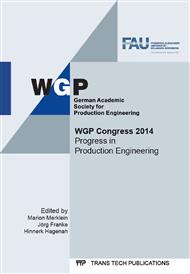p.167
p.175
p.183
p.189
p.199
p.207
p.215
p.223
p.229
A New Method to Enhance the Accuracy of the Buckling Test Using Modified Yoshida Sample
Abstract:
Because of the extensive use of thin sheet metals to reduce the weight of vehicles, wrinkling is becoming a more common and one of the most undesirable failures in the sheet forming process. Generally, experiments for studying wrinkling phenomena can be divided into two methods: actual forming of typical parts such as annular cup test on the one hand and the tests of specially designed sample geometries like the Yoshida Buckling test on the other. Recent experiments indicate that the plastic strains at the onset of wrinkling in the Buckling Test with Yoshida samples are too small to reflect reality of deep and stretch drawing conditions. Therefore, in this paper, in order to enhance the accuracy of the prediction of wrinkling, a new modified Yoshida specimen is provided for numerical simulation. The fundaments of the different buckling phenomena are going to be explained considering the energy theory in metal forming processes. Meanwhile, the influences of the changeable sample geometries in order to cause different stress distribution within loaded area of specimen have been investigated.
Info:
Periodical:
Pages:
199-206
Citation:
Online since:
September 2014
Authors:
Keywords:
Price:
Сopyright:
© 2014 Trans Tech Publications Ltd. All Rights Reserved
Share:
Citation:


